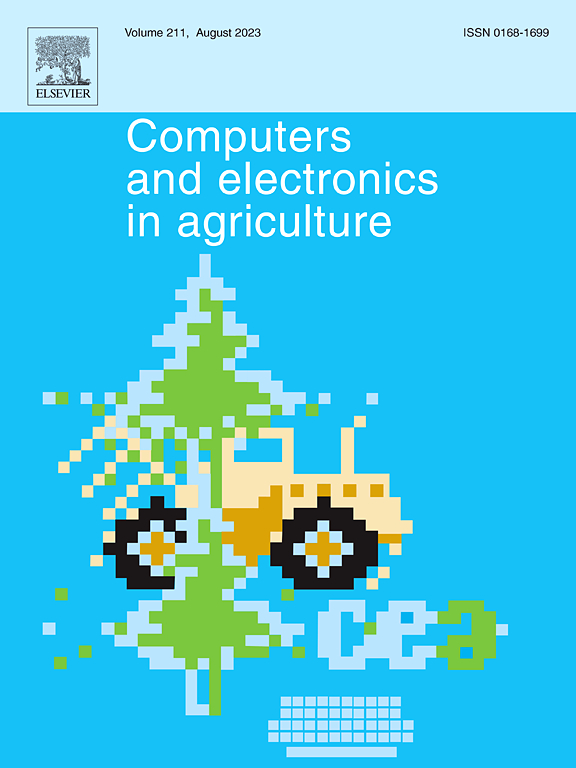CattlePartNet: An identification approach for key region of body size and its application on body measurement of beef cattle
IF 7.7
1区 农林科学
Q1 AGRICULTURE, MULTIDISCIPLINARY
引用次数: 0
Abstract
Addressing the challenges associated with manual measurement of body sizes for beef cattle, the potential for inducing stress responses in animals, and the inefficiencies inherent in such labor-intensive tasks, a novel three-dimensional (3D) point-based deep learning (DL) network named CattlePartNet is proposed. This innovative network is redesigned to segment point cloud data (PCD) of cattle into crucial body regions, thereby facilitating and optimizing the measurement process. The newly proposed CattlePartNet adopts the base network of PointNet++ as its backbone network, where the parallelized patch-aware attention module and depth-wise separable convolutions are freshly incorporated to lower the risk of overfitting. Additionally, it incorporates the Sophia optimizer, a novel and highly efficient optimization algorithm, instead of the Adam optimizer in PointNet++. Impressively, CattlePartNet outperforms the PointNet++ backbone network with a 2.4 % improvement in mean Intersection over Union (mIoU), as demonstrated on the ShapeNetPart dataset, which is widely regarded as an established benchmark for part segmentation tasks within the domain of PCD analysis. Leveraging the established network, CattlePartNet is trained on a dataset of cattle PCD for automated segmentation of key body regions, achieving an impressive mIoU of 91.7 %. The body sizes of cattle are categorized into two types: linear and curvilinear. For linear body sizes: body height (BH), body length (BL), and hip height (HH), measurement points are identified and extracted using sophisticated contour extraction techniques such as Alpha Shapes, mean curvature, and Gaussian curvature. Curvilinear body sizes: chest girth (CG) and abdominal circumference (AC) are measured through slice interception and cubic B-spline curve methods. The mean relative errors for the 5 body sizes—BH, BL, CG, AC, and HH—are reported as 4.96 %, 5.47 %, 6.04 %, 5.68 %, and 5.49 %, respectively. In comparison to traditional measurement of beef cattle, CattlePartNet precisely extracts key regions of body size from PCD, demonstrating robustness in generalizing segmentation across diverse cattle breeds and showing potential for segmenting PCD of other large livestock species. Furthermore, the measurement algorithm of 5 body sizes accurately localizes key measurement points within each region, providing essential support for breeding applications such as health assessment and production performance measurement.
求助全文
约1分钟内获得全文
求助全文
来源期刊

Computers and Electronics in Agriculture
工程技术-计算机:跨学科应用
CiteScore
15.30
自引率
14.50%
发文量
800
审稿时长
62 days
期刊介绍:
Computers and Electronics in Agriculture provides international coverage of advancements in computer hardware, software, electronic instrumentation, and control systems applied to agricultural challenges. Encompassing agronomy, horticulture, forestry, aquaculture, and animal farming, the journal publishes original papers, reviews, and applications notes. It explores the use of computers and electronics in plant or animal agricultural production, covering topics like agricultural soils, water, pests, controlled environments, and waste. The scope extends to on-farm post-harvest operations and relevant technologies, including artificial intelligence, sensors, machine vision, robotics, networking, and simulation modeling. Its companion journal, Smart Agricultural Technology, continues the focus on smart applications in production agriculture.
 求助内容:
求助内容: 应助结果提醒方式:
应助结果提醒方式:


